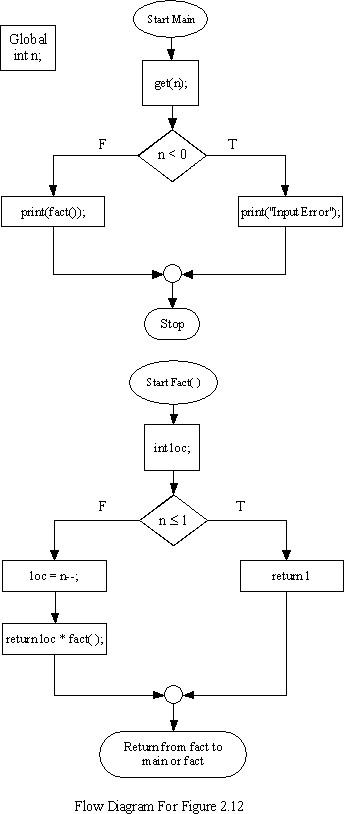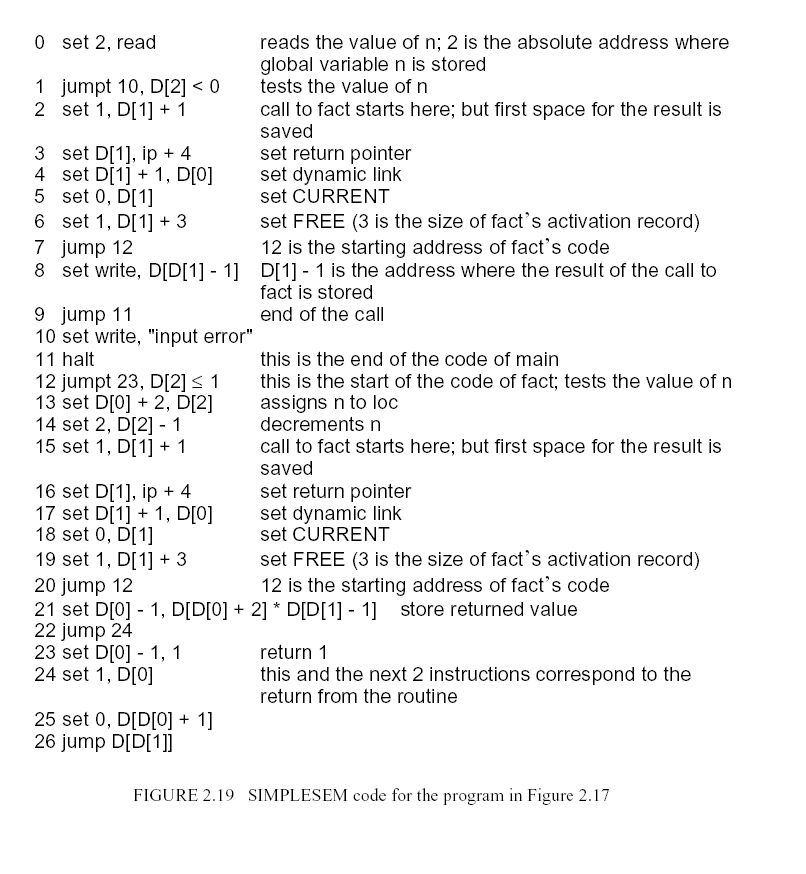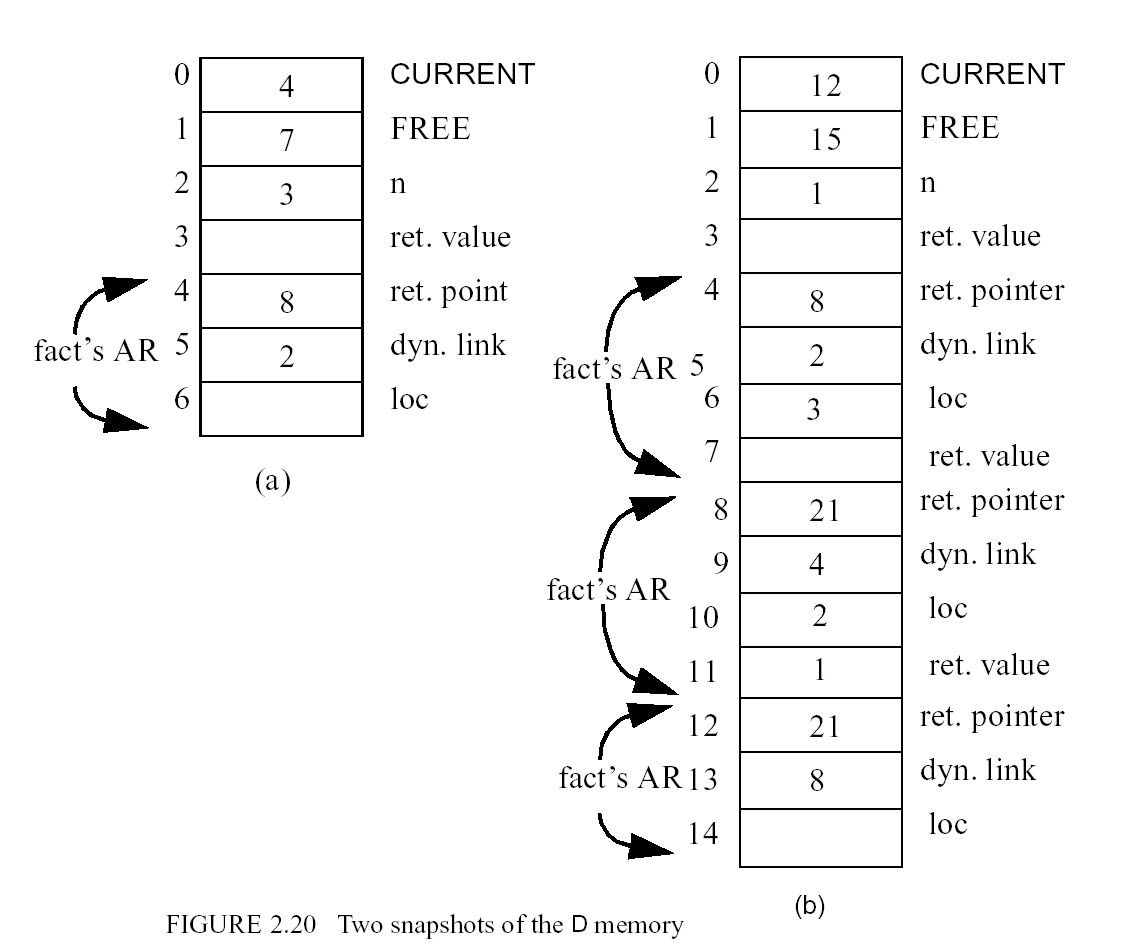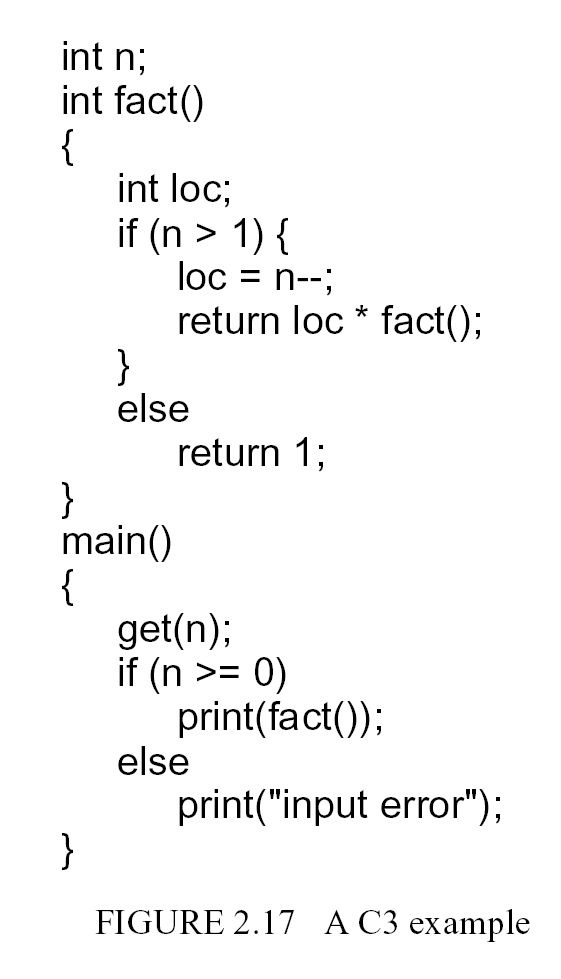

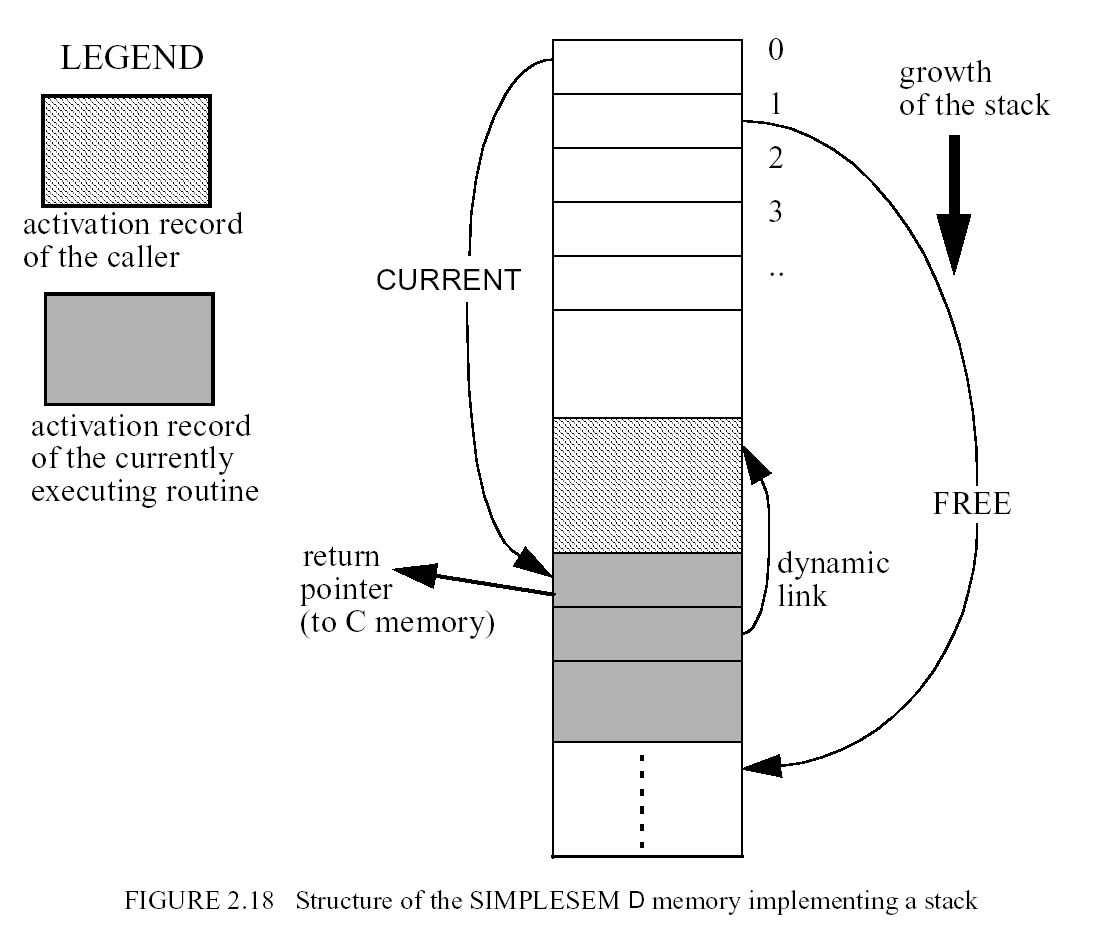
| Routine call | This code is in the caller |
| set 1, D[1] +1 | allocate space on the stack for the return value (assume one cell
needed) this step adds one to the value of FREE |
| set D[1], ip + 4 | set the value of the return pointer in the callee's activation
record. The 4 is added to ip because 4 more instructions are needed to
complete the call. this step stores the return pointer in the cell at offset 0 of the callee's activation record, though technically it has not been allocated yet. We store it at the cell pointed to by FREE. |
| set D[1]+1, D[0] | set the dynamic link of the callee's activation record to point to
the caller's activation record this step stores the value, CURRENT, in the cell at offset 1 of the callee's activation record, technically not allocated yet |
| set 0, D[1] | Set CURRENT to reflect the address of the currently executing
activation record. this step stores the value FREE in address 0 of D |
| set 1, D[1] + AR | Allocates space for the currently executing activation record by setting the value of FREE. AR is the size of the callee's activation record. |
| jump start_addr | start_addr is an address in C storage where the first instruction of the callee's code is stored |
| Return from Routine | This code is in the callee |
| set 1, D[0] | set FREE ( deallocates current activation record by setting value of FREE to CURRENT |
| set 0, D[D0]+1] | set CURRENT ( D[0]+1 represents cell where dynamic link to caller's base address is stored) |
| jump D[D[1]] | jump to stored_return_pointer (D[1] represents the address of the memory cell at offset 0 of the callee's activation record; which contains the return_pointer) |
